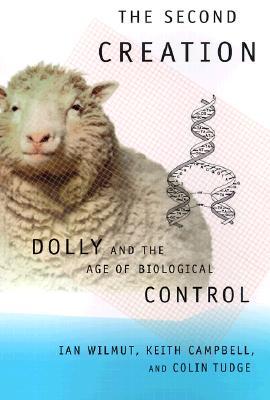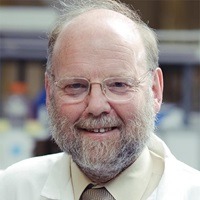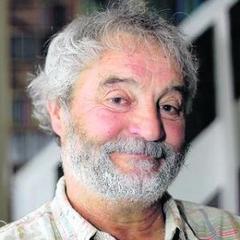The Second Creation Summary

4 min read ⌚
 Dolly and the Age of Biological Control
Dolly and the Age of Biological Control
In 1996, Dolly the sheep became the first mammal cloned from a single adult somatic cell; and, suddenly, human cloning wasn’t the stuff of SF anymore.
“The Second Creation” is an account of the events which led to the creation of Dolly. Written by the guys who created her: Ian Wilmut, Keith Campbell and Colin Tudge.
About Ian Wilmut, Keith Campbell and Colin Tudge
 Ian Wilmut is a British embryologist, best known as the leader of the team which created Dolly in 1996. After “The Second Creation,” he wrote co-authored one more book: “After Dolly”. He became a knight in 2008.
Ian Wilmut is a British embryologist, best known as the leader of the team which created Dolly in 1996. After “The Second Creation,” he wrote co-authored one more book: “After Dolly”. He became a knight in 2008.
 Keith Campbell was a British biologist, the main member of the Dolly cloning team. He killed himself on 5 October 2012.
Keith Campbell was a British biologist, the main member of the Dolly cloning team. He killed himself on 5 October 2012.
Colin Tudge is a British science writer, biologist by trade. He has written more than ten books, the most famous of which is probably “Neanderthals, Bandits, and Farmers.”
is a British science writer, biologist by trade. He has written more than ten books, the most famous of which is probably “Neanderthals, Bandits, and Farmers.”
“The Second Creation Summary”
Contrary to popular belief, Dolly wasn’t the first cloned animal; in fact, it wasn’t even the first cloned mammal for that matter.
That happened more than a decade before Dolly! And just one year before she was – well – created, in 1995, Megan and Morag – also sheep – were as well.
At the very same Roslin Institute in Edinburgh, Scotland.
Then, what made Dolly so special?
Well, because Dolly – named after American singer Dolly Parton – was created from a single adult somatic cell, taken from an ewe’s mammary gland. That cell was put in an egg from a second sheep, which was subsequently put inside a third ewe.
So, you can say that Dolly had three mothers. The somatic cell used was taken from a Finn-Dorset but was put into the egg of a Scottish blackface, which was the breed of the surrogate ewe as well. However, Dolly was born a Finn-Dorset, which demonstrates the success of the cloning process.
Or, in scientific terms, that the transferred nuclear DNA prevailed in the process.
Because, you see, Dolly wasn’t a true clone, but a DNA clone. Or, to put it in laymen’s terms, she wasn’t an exact twin of her Finn-Dorset mother, but a partial one.
Let us explain this a bit better.
A cell consists of a nucleus and a cytoplasm. In the case of twins, that cell merely splits – thus creating two identical cells.
In Dolly’s case, the nuclear DNA was put into the cytoplasm of another ewe. So, when she was, she shared the exact same nuclear DNA, but the cytoplasm was different.
Even so, Dolly was a breakthrough! It completed and revolutionized the holy biotechnological trio: genetic engineering, genomics, and cloning.
Genetic engineering is the oldest of these three. It started back in the 1970s when scientists discovered that you can put the genes from one organism into another – and they would still function properly. For example, if you put the “glowing gene” of a firefly into a frog – the frog would light up!
However, genetic engineering can only work if you have a map of the genes. That’s what genomics strives to achieve.
Finally, cloning. It’s practically what your grandad does with the plants in his garden. But, when scientifically controlled in a laboratory dish, it can do wonders. Controlled – and predictable.
And that is what “The Second Creation” is all about. Fashioning animals – as easily and as perfectly as, say, cell phones.
However, maybe it’s not a good idea to try the same with humans.
Key Lessons from “The Second Creation”
1. Meet Dolly, the Most Famous Finn-Dorset Sheep in History
2. Dolly Was the Daughter of Three Mothers and Two Fathers
3. We Can Create Humans – But Probably We Shouldn’t
Meet Dolly, the Most Famous Finn-Dorset Sheep in History
In February 1997, scientists at the Roslin Institute in Edinburgh, Scotland, shocked the world by announcing that one year before that, they had successfully cloned the first mammal from a single adult cell, something previously all but unconceivable.
Dolly Was the Daughter of Three Mothers and Two Fathers
Dolly was created from a single cell taken from the mammary gland of a Finn-Dorset sheep. Then, the content of this cell was enucleated inside an egg taken from a Scottish blackface. Finally, this egg was put inside another Scottish blackface ewe. Dolly was born a Finn-Dorset – proving the success of the cloning process.
So, you can say that she had three mothers. However, you can also say that she had at least two fathers, Ian Wilmut and Keith Campbell.
The scientists. Or, as many started calling them shortly afterward, the modern Frankensteins.
We Can Create Humans – But Probably We Shouldn’t
The cloning of Dolly was a triumph of biotechnology. Or, better yet, three different biotechnological sciences: genetic engineering, genomics, and cloning.
This paved the way for something we believed for millennia to have been the exclusive prerogative of gods. Creating humans.
According to Wilmut and Campbell, we’re, in fact, just few years away from this. However, that may also be the first step towards some posthuman future we may not want to walk into yet.
Like this summary? We’d Like to invite you to download our free 12 min app, for more amazing summaries and audiobooks.
“The Second Creation” Quotes
We should not see cloning as an isolated technology, single-mindedly directed at replication of livestock or of people. (Ian Wilmut) Share on X In general, biologists now perceive that although the different genes of the genome cooperate with each other — of course they must — they also compete. (Ian Wilmut and Keith Campbell) Share on X Human cloning is very far from Keith Campbell’s and my own thoughts and ambitions, and we would rather that no one ever attempted it. (Ian Wilmut) Share on X Actors are warned not to work with children and animals; reproductive biologists who want an easy life might be advised in similar vein to stay well clear of sheep. (Ian Wilmut and Keith Campbell) Share on X Despite the folklore, sheep are not relaxing animals. They are notoriously prone to obstetric problems, which is why shepherds traditionally spend their nights out in the fields. Share on X







